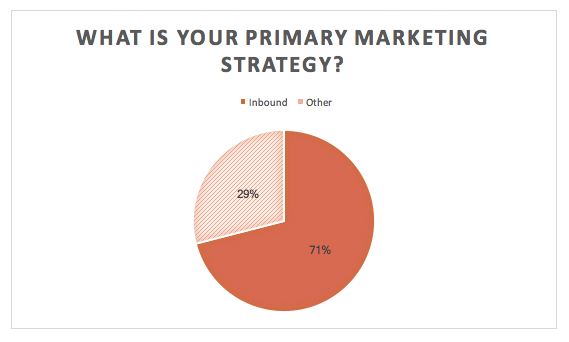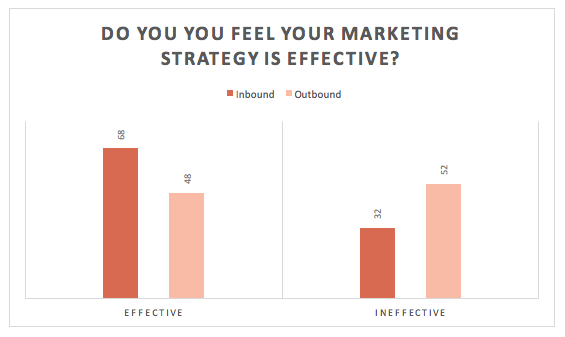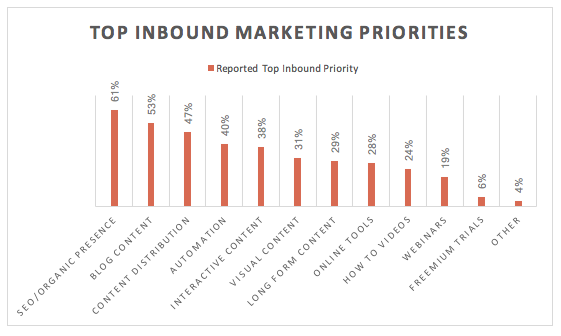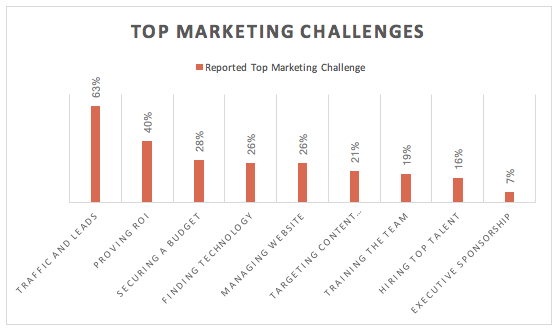2 min to read
The inbound marketing authorities at Hubspot recently released their State of Inbound Report for 2017. Through a global survey including over 6,000+ respondents, the Hubspot team measured how brands are practicing the inbound methodology in their marketing activities. The report provides a useful analysis on industry trends, the modern marketing landscape, and insights for the future. But before we dig into the details, let’s do a quick recap…
What exactly is Inbound Marketing?
Inbound marketing refers to the marketing strategies that accommodate the buyer-centric culture of the online era. Sales and marketing don’t work like they used to. The internet has given the consumer the power to research and suss out a product and its competition to make more informed purchases.
In other words, the ball is in the buyer's court. In order to address this shift in buyer behavior, marketing had to switch from an outbound, to an inbound paradigm. Instead of reaching out to prospects with cold calls and emails, inbound marketing focuses on attracting ideal buyers to your brand, like a magnet.

Modern marketers reel in their prospects through a variety of inbound techniques, including SEO, Social Media Marketing, and Content.
How to Marketers Feel About Going Inbound?
According to the report, most marketers are on board with the shift to inbound. In fact, 71% of total global respondents claim that they primarily conduct inbound marketing.
In North America specifically, 76% reported that inbound is their main method of marketing, while Europe reported 72%.
Inbound is More Effective Than Outbound
Not only are more marketers shifting the dynamic of their marketing, but they find that it’s paying off. When inbound marketers were asked how they perceived their marketing efforts, 68% reported that they believe their strategy is effective.
Meanwhile, when outbound marketers were asked the same question, more than half responded that they believe their strategy is ineffective.
Top Marketing Priorities
When it comes to high level marketing goals in the next 12 months, it is hardly a surprise that 70% listed converting leads into customers as their top marketing priority. Typically, organic traffic produces more qualified leads than paid traffic. Considering that most marketers are focused on converting leads to customers, it makes sense that inbound strategies that draw in more organic traffic would be considered the most important.
So naturally, when respondents were asked to rank top priorities for all inbound activities, Growing SEO and Organic Presence was identified as the highest, followed by Blog Content Creation, then Content Distribution.

What’s not a priority? Doing things the old school way. In fact, 32% of respondents reported that traditional paid advertising (print, outdoor, broadcast) is the most overrated marketing tactic.
Top Marketing Challenges
With new strategies arise new obstacles. Interestingly, what is many marketers biggest priority, is also their biggest challenge. When asked to identify specific hurdles, generating traffic and leads was ranked as the top marketing challenge.

Moving Forward in a Digital Era
There are many established rules and best practices of marketing, but the industry is far from static. Inbound marketing resulted as a side effect of the modern migration to an online world. And, like the internet itself, it is constantly evolving. In order to keep up with the changes in consumer culture, we have to adjust our marketing strategies to not only stay afloat, but thrive in the crowded digital space. The data in this report confirms that marketing is moving in a digital and inbound direction. Is your brand moving along with it?




Add comment ×